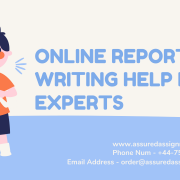1. Title page
a. Borders neither designed nor coloured
b. Name of student
c. Student number
d. Programme
e. Module
f. Supervisor
g. Date
2. Highlights
a. Two to three paragraphs for each of the below main headings
b. Each paragraph a conclusion
c. Short paragraphs of only 6 lines
d. Data in each paragraph
e. Specifically, for the cash and risks, the data should be: breakeven, payback and principal risks
f. Reference all models
3. Contents page
4. Statements
a. Ethics certificate downloaded from ethics system and pasted into plan
5. Research
a. Secondary Research (see later for primary research)
b. Research methodology, i.e. WISPA, and discussion about the five questions you wish to answer (put the WISPA model in appendix)
c. Literature review, i.e. DENTS (Put the DENTS model in the appendix)
d. Secondary research findings, i.e. conclusions of CRACK (ROAR) under the four headings: political, economic, social, and technological, i.e. PEST (Put the model in the appendix)
e. References for all models
f. Relevant illustrations and tables
g. Short paragraphs of no more than six lines
h. References in each paragraph
6. Analysis a)
a. Industry attractiveness
b. Porters five forces
c. Government (and regulation), Exchange rates, Technological change (GET)
d. (Put model in appendix)
e. Short paragraphs of six lines
f. Reference in each paragraph
g. Each model referenced
h. Relevant illustrations
7. Analysis b)
a. PEAS
b. 5Xgaps
c. Primary research, and the seven questions informed by 5xGap, i.e. CWISAT (put model in appendix)
d. TAR- in appendix
e. Pie charts and analysis of TAR
f. 1xGap
g. Short paragraphs of six lines
h. Reference in each paragraph
i. Each model referenced in appendix
j. Relevant illustrations
8. Strategy
a. Candelabra x 3
b. Justification of which one is best and why?
c. Short paragraphs of six lines
d. Reference in each paragraph
e. Each model referenced
f. Relevant illustrations
9. Campaign
a. List of 5 traditional campaigns: what, why, when, how, and where
b. List of 5 digital campaigns: what, why, when, how, and where
c. SOSTAC x 2, i.e. 1 x traditional, 1 x digital
d. Short paragraphs of six lines
e. Reference in each paragraph
f. Each model referenced
g. Relevant illustrations
10. Operations and stakeholders
a. Picture of ISPCAM
b. Short paragraphs of six lines
c. Reference in each paragraph
d. Each model referenced
e. Relevant illustrations
11. Stakeholders
a. Which roles are needed to make your business, i.e. internal and external roles
b. Draw an organogram of your proposed business and discuss each role
c. What is the CSF for recruiting each role
d. Short paragraphs of six lines
e. Reference in each paragraph
f. Each model referenced
g. Relevant illustrations
12. Processing
a. The back office and support services of your business
b. Were your biz a restaurant, the kitchen, i.e. the part that makes the biz work
c. But which the customer does not interact with!
d. A process of inputs, conversion and output
13. Customer care
a. The part the customer interacts with!
b. The steps the customer has to go through to get your service
c. Each step needing definition, because the service is a de facto part of the brand
d. A process of interactions
14. Analytics
a. Which data needs to be daily/weekly/monthly compiled to help the CEO run your biz
b. Should include specific data requirements for the first four parts of ISPCAM, i.e. Initial, stakeholders, process and customer
c. What are the CSF for each of these pieces of data, and of data collection in general
15. Management
a. The weekly/monthly tasks of a chief executive (CEO)
b. Such tasks will of course be complemented by the data, i.e. there should be data for each
c. Include review of competition and of innovation?
16. Cash and risk
a. Selection of financial model, i.e. Costs 30:40:30; 40:30:30; 33:33:33, and revenue %
b. List of assumptions, e.g. Staff costs, Fixed costs etc
c. Quarterly cashflow for 2 years
d. Simple money in, and money out
e. Models
f. Don’t forget capital and revenue are money in
g. And that fixed costs, variable costs, and equipment are all money out
17. Breakeven
a. Fixed costs
b. Variable costs
c. Revenue
d. Calculate liquidity capital
18. Cashflow
a. As breakeven
b. Plus equipment invested
c. Calculate investment capital
d. When is it cash positive?
19. Sensitivity
a. As Cashflow, but delay revenue one quarter
b. Calculate supplementary capital
20. Payback
a. Assumptions, e.g. average quarterly revenue = x
b. How many quarters until total revenue = capital
21. Breakeven
a. Assumptions, e.g. average quarterly revenue = x
b. How many quarters does total revenue = fixed costs + variable costs
22. Risks
a. Circa 25 risks
b. Macro risks which use e.g. PEST model
c. Micro risks the supply chain, and ISPCAM
d. Alternatively, consider the following risks to the biz: Customer; Company; Collaborator (supplier), Competitor, Capital, Costs, Currency (7C)
23. Recommendation
a. Is this a good business, and why?
b. Despite the biz plan, what things are still not known
c. What would be needed to find out those things and how long would it take
24. Eureka
a. Describe specific moments, during the module, when you suddenly understood something about business or about analysis, or about writing a business plan
25. References
a. Circa 50# references
b. Don’t forget to cite the lecturer, i.e. details in the lectures, and the models, e.g. CWISAT, WISPA, TAR, GET, CRACK, ROAR, the text book, and yourself
c. You did the 1MR, the GET etc!
26. Appendix
a. All the models











